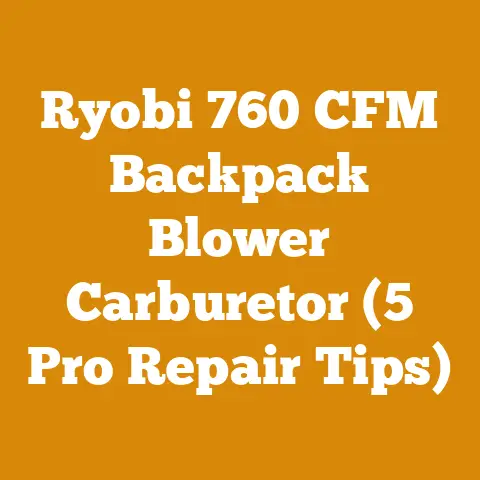Foam Filled Tire Kit for Wood Hauling (7 Expert Tips)
A big part of that is ensuring my equipment is up to the task, and that’s where foam-filled tires come in. I’ve spent years hauling wood, and I’ve learned firsthand the value of having reliable tires on my trailers and equipment. Flat tires in the middle of a hauling job? No thanks! That’s why I’m sharing my expertise on foam-filled tire kits for wood hauling, offering you seven expert tips to keep your operation running smoothly.
Foam Filled Tire Kit for Wood Hauling: 7 Expert Tips
Understanding the Benefits of Foam Filling
For years, I wrestled with flat tires on my wood hauling trailer. Thorns, sharp branches, and the sheer weight of the wood constantly threatened to sideline me. Then I discovered foam filling, and it was a game-changer.
Foam filling involves replacing the air inside a tire with a polyurethane liquid that cures into a solid, resilient foam. This eliminates the possibility of punctures, pinches, and sidewall damage that plague traditional air-filled tires. The benefits are numerous:
- Puncture-Proof Performance: This is the most obvious benefit. No more flats from nails, screws, thorns, or sharp rocks.
- Consistent Tire Pressure: Say goodbye to constantly checking and adjusting tire pressure. Foam-filled tires maintain a consistent firmness, ensuring optimal load distribution and stability.
- Increased Load Capacity: Foam filling often increases the load capacity of a tire, allowing you to haul heavier loads of wood with confidence. Check with your tire manufacturer or foam filling provider for specific load rating increases.
- Improved Stability: The solid nature of foam-filled tires provides enhanced stability, especially when navigating uneven terrain or hauling heavy loads. This reduces the risk of tipping or swaying.
- Extended Tire Life: By eliminating punctures and maintaining consistent pressure, foam filling can significantly extend the lifespan of your tires, saving you money in the long run.
- Reduced Downtime: Fewer flats mean less downtime spent changing tires, allowing you to focus on getting the job done.
Takeaway: Foam filling offers a significant upgrade in reliability and performance for wood hauling tires.
Assessing Your Needs: Is Foam Filling Right for You?
Before diving into foam filling, it’s crucial to assess whether it’s the right solution for your specific needs. Consider the following factors:
- Frequency of Flats: If you’re constantly battling flat tires, foam filling is a no-brainer.
- Terrain: Are you hauling wood over rough, rocky, or thorny terrain? Foam filling is ideal for such environments.
- Load Requirements: Do you regularly haul heavy loads of wood? Foam filling can increase your tire’s load capacity.
- Budget: Foam filling is an investment. Weigh the cost against the potential savings in reduced downtime and tire replacements.
- Application: Foam filling is best suited for slow-moving vehicles such as trailers, wheelbarrows, and some forestry equipment. It is not recommended for on-road vehicles that travel at high speeds due to heat build-up.
For example, I use foam filled tires on my wood hauling trailer, which spends its life navigating rough terrain and carrying heavy loads. However, I wouldn’t consider it for my pickup truck, which requires the cushioning of air-filled tires for comfortable on-road driving.
Takeaway: Carefully evaluate your needs and budget to determine if foam filling is the right investment for your wood hauling operation.
Choosing the Right Foam Filling Material
Not all foam filling materials are created equal. Selecting the right material is crucial for optimal performance and longevity. Here are some key considerations:
- Density: Foam density affects the tire’s firmness and load capacity. Higher density foams provide greater support but can also result in a harsher ride.
- Hardness: Measured in Shore A durometer, hardness indicates the foam’s resistance to indentation. Choose a hardness rating appropriate for your load requirements and terrain.
- Material Composition: Polyurethane foams are the most common and durable option for tire filling. Look for high-quality, closed-cell polyurethane foams that resist water absorption and degradation.
- Manufacturer Reputation: Choose a reputable foam filling provider with a proven track record of quality and reliability.
- Application Temperature: Consider the ambient temperature in which you’ll be using the tires. Some foams are better suited for extreme temperatures than others.
I’ve found that polyurethane foams with a Shore A durometer of 60-70 provide a good balance of firmness and ride comfort for my wood hauling trailer. Always consult with your foam filling provider to determine the best material for your specific application.
Takeaway: Research and select a high-quality foam filling material with the appropriate density, hardness, and composition for your wood hauling needs.
Preparing Your Tires for Foam Filling
Proper preparation is essential for ensuring a successful foam filling process. Follow these steps:
- Clean the Tires: Thoroughly clean the inside and outside of the tires to remove any dirt, debris, or contaminants. Use a degreaser to remove any oil or grease.
- Inspect the Tires: Carefully inspect the tires for any damage, such as cuts, cracks, or bulges. Do not foam fill tires that are significantly damaged, as the foam will not bond properly and the tire may fail prematurely.
- Remove Valve Stems: Remove the valve stems from the tires to allow air to escape during the filling process.
- Vent Holes: Drill vent holes in the tire sidewalls to allow air to escape and prevent air pockets from forming during the filling process. Consult with your foam filling provider for the appropriate size and placement of vent holes. Typically, two to four vent holes, 1/4 to 3/8 inch in diameter, are sufficient.
- Position the Tires: Position the tires in a way that allows for easy access for the foam filling equipment. Typically, this involves placing the tires on a stand or rack.
Takeaway: Thoroughly clean, inspect, and prepare your tires before foam filling to ensure a successful and long-lasting result.
The Foam Filling Process: Step-by-Step
While I always recommend having a professional handle the foam filling process, understanding the steps involved can help you ensure the job is done correctly. The process typically involves the following:
- Mixing the Foam Components: The foam filling material typically consists of two components that must be mixed together in precise proportions. The foam filling provider will use specialized equipment to ensure accurate mixing.
- Injecting the Foam: The mixed foam is injected into the tire through the valve stem hole or a designated injection port. The foam filling provider will carefully monitor the filling process to ensure that the tire is completely filled and that no air pockets form.
- Curing the Foam: Once the tire is filled, it must be allowed to cure for a specified period of time. The curing time will vary depending on the type of foam used and the ambient temperature.
- Trimming Excess Foam: After the foam has cured, any excess foam that has seeped out of the vent holes or valve stem hole is trimmed away.
- Reinstalling Valve Stems (Optional): In some cases, the valve stems may be reinstalled after the foam has cured. This is typically done to prevent debris from entering the tire.
Case Study: I once witnessed a DIY foam filling attempt gone wrong. The individual failed to properly mix the foam components, resulting in a tire that was only partially filled and had a spongy texture. This highlights the importance of using specialized equipment and expertise for foam filling.
Takeaway: The foam filling process requires specialized equipment and expertise. It’s best to leave it to the professionals.
Maintenance and Care of Foam Filled Tires
Foam-filled tires are incredibly low-maintenance, but a few simple steps can help extend their lifespan:
- Regular Inspections: Periodically inspect your foam-filled tires for any signs of damage, such as cuts, cracks, or bulges. While foam filling prevents punctures, the tire casing itself can still be damaged.
- Avoid Overloading: While foam filling increases load capacity, exceeding the tire’s maximum load rating can still damage the tire and compromise its performance.
- Proper Storage: Store your foam-filled tires in a cool, dry place away from direct sunlight and extreme temperatures.
- Clean Regularly: Keep your foam-filled tires clean to prevent the build-up of dirt and debris, which can accelerate wear and tear.
- Check for Foam Degradation: Over time, the foam can degrade, especially if exposed to harsh chemicals or extreme temperatures. If you notice any signs of foam degradation, such as cracking or crumbling, consult with your foam filling provider.
Metric: I aim to inspect my foam-filled tires every three months, checking for any signs of damage or degradation.
Takeaway: Regular inspections, proper storage, and cleaning can help extend the lifespan of your foam-filled tires.
Addressing Common Concerns and Misconceptions
Foam filling is a relatively straightforward process, but some common concerns and misconceptions often arise. Let’s address a few:
- Ride Quality: Some people worry that foam filling will result in a harsh ride. While foam-filled tires are firmer than air-filled tires, the ride quality is generally acceptable for slow-moving vehicles like trailers and wheelbarrows.
- Cost: Foam filling is an investment, but the long-term savings in reduced downtime and tire replacements often outweigh the initial cost.
- Weight: Foam-filled tires are heavier than air-filled tires, which can affect fuel efficiency and handling. However, the benefits of puncture-proof performance and increased load capacity often outweigh this drawback.
- Heat Build-up: Foam-filled tires can generate more heat than air-filled tires, especially at high speeds. This is why foam filling is not recommended for on-road vehicles that travel at high speeds.
- DIY Foam Filling: While DIY foam filling kits are available, I strongly recommend having a professional handle the process. Improper mixing or application can result in a tire that is only partially filled or has a spongy texture.
Personal Story: I once had a neighbor who attempted to foam fill his wheelbarrow tires using a DIY kit. He didn’t properly mix the foam components, and the tires ended up with large air pockets. He had to discard the tires and start over, ultimately spending more money and time than if he had hired a professional in the first place.
Takeaway: Address your concerns and misconceptions about foam filling by consulting with a reputable foam filling provider. They can provide you with accurate information and help you determine if foam filling is the right solution for your needs.
By following these seven expert tips, you can ensure that your foam-filled tires provide years of reliable service, keeping your wood hauling operation running smoothly and efficiently. Remember, investing in quality tires and proper maintenance is an investment in your productivity and peace of mind. Now get out there and haul that wood!






